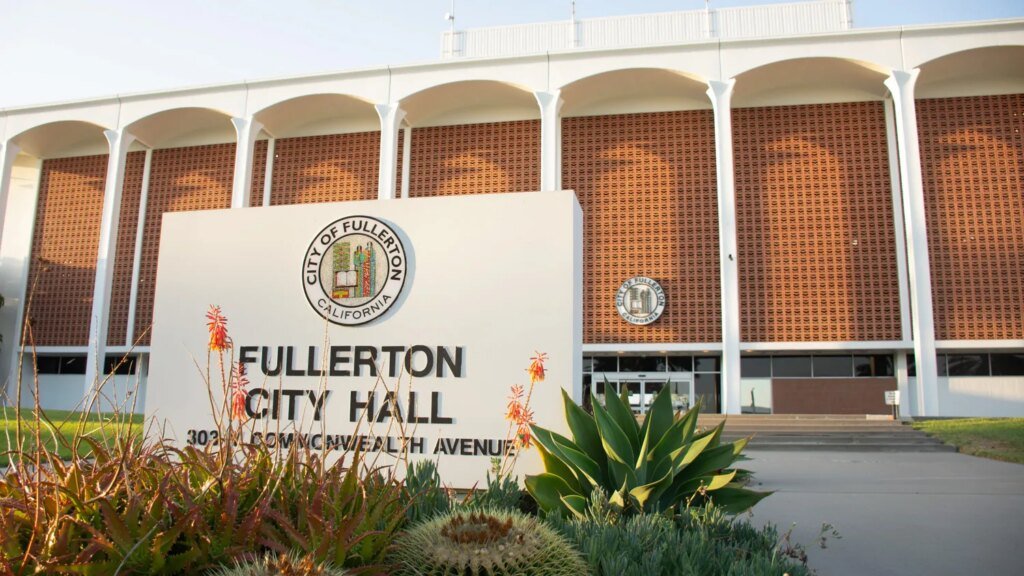How Loud Should It Get in Downtown Fullerton?
As the sun sets over Fullerton’s bustling downtown, the warm glow of neon lights illuminates the vibrant nightlife below. Patrons spill onto sidewalks, clinking glasses and sharing laughter that melds with the lively rhythm of a band, while nearby residents brace themselves for yet another night of cacophony. “Some nights, it feels like I’m living in the middle of a concert,” says Maria Gonzalez, a long-time resident whose apartment overlooks Harbor Boulevard. “It’s exciting but also exhausting. There has to be a middle ground.”
Striking a Balance
In a city known for its lively bars, cafes, and burgeoning arts scene, officials are grappling with a challenge that straddles vibrant community engagement and the sanctity of peace for its residents. Fullerton City Council is poised to address these competing interests, drawing up an ordinance aimed at establishing clear noise limits across downtown, a region that’s become a hotspot for both nightlife and living.
Earlier this month, Mayor Fred Jung highlighted the urgency of this issue, stressing the importance of a structured approach: “A broken clock is right twice a day and the government got this right in 2012 – just never got past anything more than a certain zone.” The proposed ordinance seeks to formalize existing thresholds derived from regulations around Fullerton’s Transportation Center, an approach that has already shown success in managing sound levels.
Drafting the Proposal
Under the proposed rules, sound levels would be regulated by a tiered system based on the time of day. Noise cannot exceed:
- 75 decibels for five minutes within an hour from 7 a.m. to 10 p.m.
- 80 decibels for a maximum of one minute in the same timeframe.
- Lower limits of 65 and 70 decibels apply during nighttime hours, intensifying only on weekends.
This dual approach aims to welcome outdoor entertainment—like live music—while safeguarding the tranquility that residents like Gonzalez desperately seek. “We need the life and energy downtown, but we also need to sleep,” she asserts, embodying the sentiments of many residents caught in the soundscape clash.
Community Response: Voices for and Against
The feedback from the community has been mixed. Some locals welcome the prospect of formalized noise regulations. Dr. Eric Thompson, an acoustics expert at Fullerton State University, emphasizes the need for balance: “Excessive noise can inhibit the ability to communicate and can lead to increased stress levels. Establishing limits is a step toward fostering a healthier community.” His sentiment is echoed by a recent study that found chronic noise exposure can lead to long-term health issues, including anxiety and cardiovascular problems.
Conversely, local business owners voice their apprehensions. Sarah Smith, owner of The Jazz Spot, confides, “This ordinance is going to limit our ability to attract crowds. Live music is our lifeblood, and noise regulations could strangle our business.” The anxiety surrounding this legislation resonates among those committed to ensuring that Fullerton remains a vibrant hub of culture and connection. In a recent survey, 62% of local business stakeholders expressed concerns that stricter noise controls might jeopardize their operations.
Enforcement and Compliance Challenges
As the city contemplates strict enforcement mechanisms—including fines of up to $500 for repeated violations—it becomes clear that navigating these new regulations will require cooperation and communication. Business owners with three noise violations within a year will need to meet with the police chief to discuss remediation options, a prospect that leaves some feeling apprehensive.
“It’s essential that these regulations are enforced fairly,” notes Ruth Wells, a city code enforcement supervisor. “We have to protect residents while supporting our businesses. The key is consistency.” With only five code enforcement officers dedicated to a city of approximately 137,000, the onus of enforcement may present logistical challenges.
A Path Forward
The proposed noise limits represent a crucial junction for Fullerton’s growth. As the city fiddles with the volume dial on its downtown scene, community dialogues will be essential. “We need to think about what kind of city we want to be—one that celebrates life while respecting individual peace,” advises local urban planner, Michael Zinser. His call for community input aligns with best practices globally, where successful noise regulation is often founded on collaboration between local governments, residents, and businesses.
As Fullerton’s city council prepares to debate the ordinance, the question remains stark: can a vibrant downtown thrive alongside a peaceful living space? For now, residents like Maria Gonzalez hold their breath, waiting for sound—both musical and legislative—to settle. In a city filled with rhythm, finding harmony might be the ultimate challenge.





